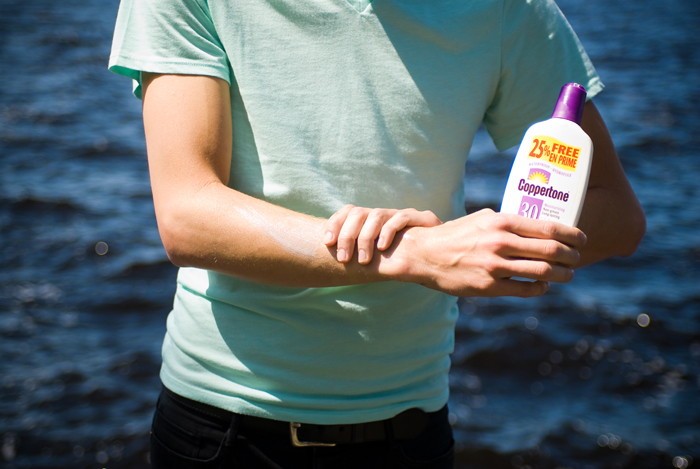A sunburn now can cause damage later
When you think skin cancer, you should think of the ways you can protect yourself; one of the best ways is by wearing sunscreen. It is recommended that you wear an SPF of 30 or higher daily – not just when going to the beach.
According to the Journal of the American Academy of Dermatology, Canadians born in the 1990s have a two to three times higher risk of getting skin cancer in their lifetime compared to those born in the 1960s. For those born in the ‘90s, there is a one in six risk of getting skin cancer; for those born in the ‘60s, there is a one in 20 chance.
These are some powerful statistics, especially given our advances in medicine and knowledge of the harm that UV rays cause.
Vanity in bed with hazard
One thing hasn’t changed from the 1960s and that’s the definition and perception of beauty. Some still see a tan as beautiful. The search for the perfect tan isn’t restricted to the outdoors, either – tanning salons have become a growing industry.
The Canadian Dermatology Association states that, “There is growing evidence that exposure to ultraviolet radiation through the use of tanning beds and sunlamps, increase the risk of developing melanoma especially if exposure begins in adolescence or young adulthood.”
“Some jurisdictions in the U.S. have restricted individuals under age 18 from using tanning beds,” said Dr. Vince Bertucci, an Ontario-based dermatologist. The World Health Organization (WHO) states that, “it is known that young people who get burnt from exposure to UV will have a greater risk of developing melanoma later in life, and recent studies demonstrate the direct link between the use of sunbeds and cancer.”
Skin cancer and socioeconomic status don’t seem like two things that would necessarily be related, but as Dr. Bertucci explained, they may be.
Economic and lifestyle changes now see Canadians flocking to sunny destinations every year, increasing the amount of sun exposure they get.
“Today, many Canadians vacation down south, receiving more intermittent sun exposure. Years ago, this was less common and, living in a cold Canadian environment, they didn’t expose themselves as frequently to the sun,” said Dr. Bertucci.
Types of skin cancer
The Canadian Dermatology Association states that the main cause of skin cancer is too much UV radiation.
Two of the more common skin cancers that we see are basal cell and squamous cell skin cancer, which appear on the skin as a spot.
These lesions can than be surgically removed or, in very rare occasions, fought using radiation therapy.
Basal and squamous cell skin cancers are thought to be caused by cumulative sun exposure.
A more serious type of skin cancer is melanoma, which is now the eighth most common cancer in Canada.
“Bad burns when you’re younger can affect, and increase the risk of, melanoma later in life,” Dr. Bertucci said.
The lifetime risk of melanoma for Canadian men is one in 74 and for women it’s one in 90. Up to 70 per cent of all melanomas are first identified by patients themselves.
If you see something suspicious, get it checked by your doctor. If they say it looks fine but you are still concerned, you can keep a photo diary of that suspicious mole.
Hold a ruler up to the area of concern and take a picture every month to see if there are any changes. If there is a change, see your doctor again. (For more info, see graph.)
Skin cancer is treatable in most cases, and it’s also preventable. If you must have a sun kissed look, try using a self-tanner (I like to mix mine with my moisturizer so I don’t streak).
You can also try going to a spa that offers spray tanning.
There are alternatives to lying in the hot sun for hours, you just have to try them!
Velangeline Ferrigno has been a freelance make-up artist for over eight years.
Published in Volume 63, Number 29 of The Uniter (July 16, 2009)








